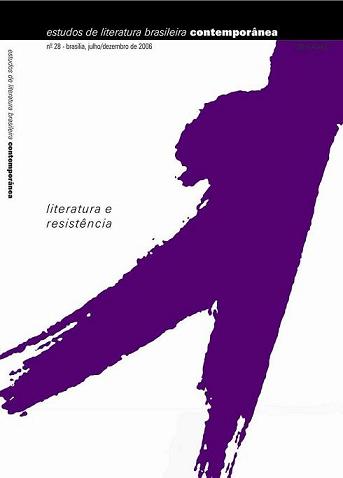Espaços populares e corpos resistentes em dois romances de Diamela Eltit
Abstract
O presente artigo aborda dois romances recentes da escritora chilena Diamela Eltit com o objetivo de analisar algumas estratégias de resistência de uma narrativa confrontada ao estado
de desmemória que prevalece no Chile da pós-ditadura. Los trabajadores de la muerte (1998) e Mano de obra (2002) ocupam espaços populares para tornar visíveis certos corpos que persistem na paisagem urbana, em rebeldia à s determinações estéticas e políticas do mercado.
References
DELEUZE, Gilles. Foucault. Paris: Editions de Minuit, 1986.
ELTIT, Diamela. Los vigilantes. Santiago-Chile: Sudamericana, 1994.
______. “Vivir ¿dónde?”. Revista de Crítica Cultural, nº. 11. Santiago-Chile, 1995, pp. 39-43.
______. Lumpérica. Santiago de Chile: Seix Barral, 1998. [Edição original: 1983].
______. Emergencias: escritos sobre literatura, arte y política. Santiago-Chile: Planeta/Ariel, 2000.
______. Los trabajadores de la muerte. Buenos Aires: Norma, 2001. [Edição original: 1998].
______. Mano de obra. Santiago-Chile: Seix Barral, 2002.
FOUCAULT, Michel. Vigiar e punir: história da violência nas prisões. Petrópolis: Vozes, 1977.
MASIELLO, Francine. El arte de la transición. Buenos Aires: Norma, 2001.
______. “El trabajo de la novela”. Revista Casa de las Américas, jan.-mar. de 2003, pp.136-40.
MOULIAN, Tomás. El consumo me consume. Santiago-Chile: LOM ediciones, 1999.
WAISMAN, Sergio. “Medea entre la taberna y el mercado: la desfiguración de la madre en Los trabajadores de la muerte”. La torre: Revista de la Universidad de Puerto Rico, ano X, nº. 38. Puerto Rico, 2005, pp. 617-33.
Downloads
Published
Issue
Section
License
Authors who publish in this journal agree to the following terms:
a) The authors maintain the copyright and grant the journal the right of first publication, the work being simultaneously licensed under the Creative Commons Attribution License-Non Commercial 4.0 which allows the sharing of the work with acknowledgment of the authorship of the work and publication this journal.
b) Authors are authorized to enter into additional contracts separately, for non-exclusive distribution of the version of the work published in this journal (eg publish in institutional repository or as a book chapter), with authorship recognition and publication in this journal.
c) Authors are allowed and encouraged to publish and distribute their work online (eg in institutional repositories or on their personal page) after the editorial process, as this can generate productive changes, as well as increase the impact and citation of published work (See The Effect of Free Access).
d) The authors of the approved works authorize the magazine to, after publication, transfer its content for reproduction in content crawlers, virtual libraries and the like.
e) The authors assume that the texts submitted to the publication are of their original creation, being fully responsible for their content in the event of possible opposition by third parties.


